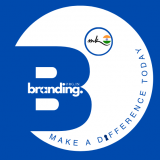
Step-by-step guide to creating a personal brand
Step-by-step guide to creating a personal brand
1 Identify your target audience
An effective personal brand speaks to a specific audience. Start by defining who you want to reach—potential employers, clients, peers, or industry influencers—and research what they value. How do you see your values aligning? Where do you see your unique perspective offering something to expand or refine these shared values?
Knowing your audience allows you to shape your brand’s message to resonate with their needs and preferences. For instance, if your audience is tech entrepreneurs, your brand should emphasize innovation and problem-solving, showcasing skills and qualities that cater to their needs while ensuring that your unique approach offers something that won’t be found anywhere else.
2 Define your unique value proposition
Figure out what makes you unique. What sets you apart from your colleagues? Take an inventory of your skills, strengths, and accomplishments. Reflect on any distinctive experiences, passions, or qualities that have helped define your professional identity. Craft a personal UVP reflecting your purpose, goals, and vision from this.
Remember: A good UVP is concise yet powerful, helping guide your decisions and serving as a reference point for your brand.
Here’s an example:
Enhancing team success by providing clarity, efficiency, and strategic insight. Through a hands-on approach and proven methods, I help businesses minimize waste, increase productivity, and cultivate continuous improvement—delivering significant results.
3 Craft your brand story
Your brand story should be cohesive, highlighting your experiences, skills, and values. Begin by outlining the steps that brought you to your current role, the challenges you’ve faced, and the goals you’ve achieved.
Make your story relatable by sharing the moments that inspired or challenged you and what you learned along the way. Remember, a compelling brand story is honest and relatable—it’s a journey of growth and learning, not merely a list of accomplishments.
4 Build your online presence
Your online presence is often the first impression others will have of your brand. Start with LinkedIn, crafting a headline and summary that capture your unique strengths and expertise. On social media, select platforms where your target audience is most active.
Consider creating a personal website or blog that serves as a central hub for your brand. A strong website might include sections for your résumé, portfolio, bio, mission, testimonials, and links to social media profiles, allowing visitors to gain a comprehensive understanding of who you are all in one place.
5 Network and build relationships
Networking is essential to building a strong brand. Attend industry events, join relevant online communities, and engage with your peers regularly. But simply showing your face isn’t the solution—be intentional about who you connect with, focusing on people who align with your goals and values.
Networking requires time and energy from you—respect that. This is how you will get the most value out of networking events. Networking allows you to establish yourself as a thought leader, while connections made through networking often lead to collaborative opportunities and referrals that can enhance your credibility.
6 Share thought leadership content
Sharing thought leadership content positions you as an expert and a valuable resource in your field. Write articles, create videos, or share insights about your industry’s latest trends, challenges, or innovations. You could also consider hosting webinars or contributing guest posts to reputable blogs.
Regularly sharing valuable insights strengthens your brand and attracts followers who value your expertise, expanding your professional reach.
7 Monitor and evolve your brand
A personal brand isn’t static—it should evolve as you grow. Regularly evaluate your brand to ensure it aligns with your goals and stays relevant. This may involve adjusting your brand story, updating your visual identity, or refreshing your values as your career progresses.
Being adaptable shows that you’re in tune with professional growth and responsive to industry changes, helping you maintain an authentic and dynamic brand.

